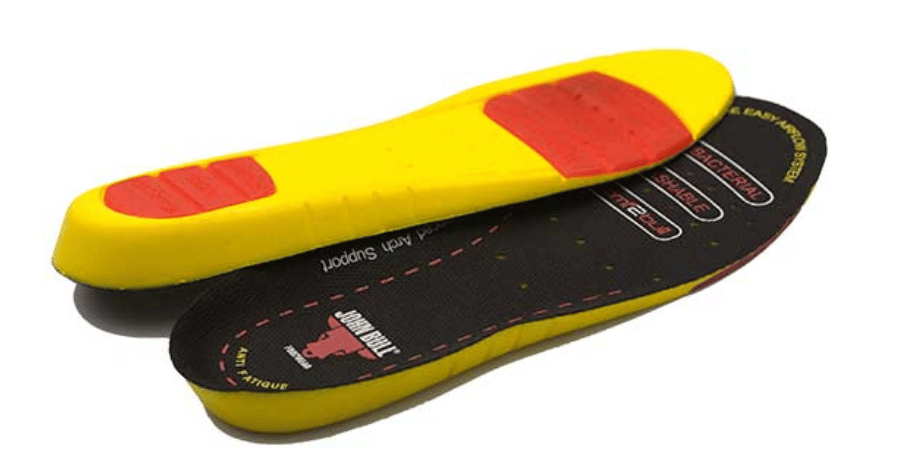Caring for Work Boots – The Ultimate Guide
You’ve made the investment into a new pair of work boots – take good care of them and they should last you awhile. But what does caring for work boots actually involve? We’ve put together some tips and tricks to help you get the best bang for your buck when it comes to work footwear.
Clean and condition your footwear:
Cleaning Leather:
Begin by removing any caked-on dirt or debris from your boots using a soft-bristled brush or slightly damp cloth. Gently brush or wipe away the dirt, taking care not to saturate the leather. Once cleaned, allow your boots to air dry completely. Keep them away from direct sunlight or heat sources. This can cause the leather to dry out and become brittle.
Next, apply a leather polish, grease, wax, or cream to help nourish and protect the leather. Huberds shoe grease is a great way to add a protective layer and condition your leather boots. If you’re using a new product for the first time, it’s advisable to test it on an inconspicuous area of the boot to ensure it doesn’t alter the color or appearance in an undesirable way.
Cleaning nylon:
For light soiling or surface dirt, use a dry soft-bristled brush or slightly damp cloth to gently brush or wipe away any caked-on debris from your boots. Immediately allow the boots to air dry in a well-ventilated area, keeping them away from direct sunlight or heat sources, as these can cause damage. Never place nylon boots in a clothes dryer.
If your boots require a more thorough cleaning, remove the removable footbeds first. Sparingly spot clean the boots with a small amount of mild detergent mixed with water. Use only as much water as necessary to avoid saturation. Rinse with warm water, taking care not to allow excessive water penetration inside the boots. Hand wash only – do not soak the boots or use a washing machine, as this can lead to permanent damage.
Separately, wash the removable footbeds with mild soap and water, then air dry them flat.
To facilitate drying, stuff the clean boots with dry paper towels or similar material. Then, lay them flat on a clean surface. Once the boots are completely dry, remove the stuffing and reinsert the dry footbeds.
For added protection, consider applying a waterproof spray designed for nylon or synthetic fabrics, following the product’s instructions carefully.
Repeat this cleaning process as needed to keep your nylon work boots in optimal condition.
Sole and tread:
Begin by removing any large pieces of dirt or debris that may be stuck to your boots.
Next, use a stiff nylon brush to thoroughly clean between the grooves of the tread pattern. Scrub vigorously to dislodge any dirt or grime that has accumulated in these crevices. If stubborn dirt remains, consider soaking your boots in a shallow bath or bucket filled with warm water for a couple of hours. After soaking, use the stiff nylon brush again to scrub away the softened dirt and debris.
Once you have removed the majority of the dirt and grime, use a damp cloth to wipe down the entire surface of the boots, ensuring an overall clean finish. Avoid saturating the material excessively during this step.

Finally, allow your freshly cleaned boots to air dry naturally. Avoid exposing them to direct sunlight or heat sources, as this can potentially damage or compromise the materials.
Lace your boots well:
While it may seem like a simple task, properly lacing your work boots can contribute to the longevity and integrity of your safety shoes. Forcing your feet into boots while the laces are still tightly secured can strain the lacing system. This can potentially bend or deform the heel collar over time. If you require easy and frequent access to your safety footwear, slip-on styles or boots with zippers may be a more suitable option.
Similarly, correctly tying your laces is equally important. A snug, secure fit will distribute the weight and pressure evenly across the entire shoe. This can minimise excessive wear and tear on specific areas that were not designed to bear the brunt of the load. Proper lacing techniques can help prevent premature breakdown of components not intended to support the full weight and stress of your daily activities. There a many tying techniques around including one in the video below.
You need quality Insoles:
Caring for your work boots isn’t the only thing that needs taken care of. You have to take care of your feet too. If you notice any cracks, compression, fading or gross odours coming from your insoles – it might be time for some new ones.
Work boot insoles ideally need to be replaced about every 6-9 months. If you are wearing your boots all-day, every-day, they may need to be replaced sooner than this.
Work boots require regular footbed replacement to enhance foot support, comfort, and flexibility. Continuous usage diminishes the effectiveness of insoles, leading to foot fatigue and joint pain.

Storage and rotation of footwear:
Even the most durable and well-constructed safety shoes can fall victim to wear and tear if they are subjected to constant, uninterrupted use. Caring for your work boots extend the lifespan of your work footwear. Maybe think about purchasing a couple of pairs that can be switched. Allowing your safety shoes or boots to rest and recover between uses can significantly prolong their longevity and prevent early wear.
Get them repaired and resoled:
Are you hesitant to part ways with your trusty, well-worn boots? Instead of prematurely retiring them, consider exploring the services of a skilled cobbler or shoe repair specialist. These professionals can breathe new life into your ageing footwear through various techniques, such as resoling, restitching, and conditioning.
Cobblers can replace frayed or worn-out laces, enhancing not only the aesthetic appeal but also the functionality of your safety boots or shoes. This attention to detail can significantly extend the life of your footwear, allowing you to continue benefiting from their protection and familiarity.
Here at Safety 1st, we have a great range of footwear accessories to assist with boot care and help you get the best out of your investment.
We’ve covered off quite a bit about caring for your work boots. If you have any questions, just get in touch with us.







































